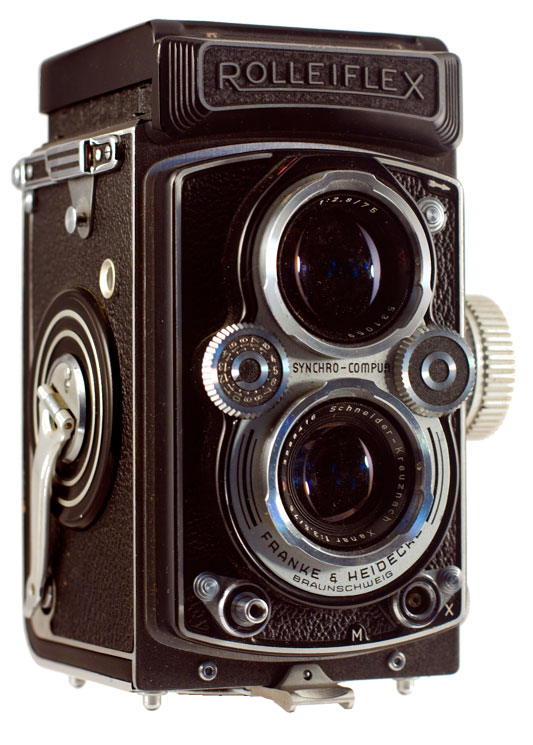
Approx. dates of manufacture: 1954 – 1955 (this model only)
Approx. original price: $234.50
Approx. street value: $234.50
I've wanted a Rolleiflex for a long as I can remember. They were the Cadillac of cameras (where Leicas and Hasselblads would be Aston Martins and Deusenbergs). I had other TLRs, some better than others, but it wasn't until I recently purchased this one that I realized how this one makes my other TLRs (and many of my other cameras) look like cheap toys.
A seriously nice camera. Well thought out, robust, and still very capable even though it's now over 50 years old. I had to read instructions to figure out a couple of things, but most of the camera was intuitive — a sign of superior engineering.
The Rolleiflex TLR was a working professional's camera, like my Speed Graphic and Canon F-1. People had been using roll film for decades when it came out, but roll film was still largely an amateur's format — pros often used larger sheet film. But the Rolleiflex took 120, and because it was popular and a professional camera, it helped establish 120 as a professional's format. A century later, you can still buy brand-new professional cameras that use 120. 35mm is the only other professional rollfilm left.
The upshot of that is you can still shoot brand new film in cameras that are 50 years (or more) old, while Kodak's equivalent cameras, which took 620, are now filmless classics (you can buy 620 film from special suppliers, but it's a larger size that's been cut and re-spooled onto 620 spools).
So the Rolleiflex is historically significant, yet it's still in use today. They can still compete with modern cameras. And if you look hard at this camera, you can see why. These things are the pinnacle of the mechanical era of our history, before everything became electronic. Back when you had to do everything with levers and springs and roller-bearings. Some day historians will look back at the 20th century and marvel at our mechanical technology the way we marvel at medieval cathedrals—both as what we were capable of doing with our existing technology, and as beautiful works of art as well.
Camera manual: Orphan Cameras.com


